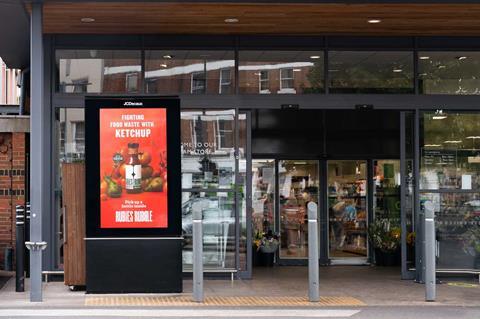
I often contend that the retailer and its role in advertising as a media owner is untapped. Yet, you could still argue that Walmart joining Microsoft’s recent bid to buy TikTok is an extraordinary move.
But there is profitable opportunity in thinking about customers as audiences. Grocers must invest in digital for post-lockdown growth to capture online growth and win customers back in-store.
They must also embrace the opportunity digital presents for them to assume role of publisher by putting their customer data to work and generating revenue through their owned media assets.
Plenty of evidence supports this: last year, data science experts at Dunnhumby found retailers could generate an additional 1% of global retail sales with media. This is worth £1.7bn for UK retailers.
A recent study by Threefold found the top 70 UK retailers (excluding Amazon) have an opportunity to develop an incremental £1bn in advertising revenue from their owned media estates each year.
In May, UBS noted that delivering actionable customer data and attributable sales uplift to suppliers could help food retailers tap into a circa £3bn advertising stream in the UK and a profit pool of circa £1.5bn.
So, the returns from monetising UK grocers’ media estates are potentially massive. They represent a new, highly profitable revenue stream, where physical and digital estates become media channels.
The key here is that for these kinds of revenue streams to be sustainably profitable, the retailer needs to make sure their advertising doesn’t become an irritant that obfuscates the brand engagement.
Just like everything else, retailers must ensure the engagement is relevant. It has to be data-driven. Use assets with centralised, aggregated distribution capabilities to personalise that engagement.
Then, the retailer can offer the kind of relevance that brings both incremental and additive value to the customer’s retail experience of brand partners. Some have already started down this road online.
But the store is also a media asset. Going back to basics, if you’re launching a new product with TV ads, you really want displays in every big store with visual collateral that links back to the advertising.
Ideally, you want to be pushing your message through all physical and digital channels at the same time to create ubiquity. Then you want to take that ubiquity to the next level with direct marketing.
First-party data can facilitate one-to-one engagement and connect brands directly with the right audience. This enables timely, relevant digital marketing that can make shopping trips much richer.
UBS highlighted that retail media is a compelling brand medium if data from “recurring, predictable and consistently large volumes” of food retail transactions is brought to bear at the point of purchase.
As always, there’s a balance to strike between adding value, which is great, and interrupting someone’s mission, which is not so great. It takes lots of skill, analysis, testing and the right tech.
Those that get it right will be able to engage the customer with more compelling content and build trust through greater relevance, which is exactly the kind of investment brands are now looking for.



















No comments yet